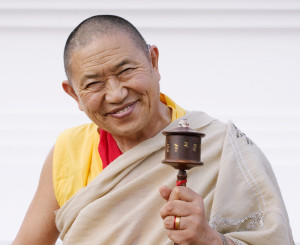What would Rinpoche recommend for a lay practitioner …. family obligations … difficult to do extensive retreat?
 Question: Milarepa is said to have achieved liberation in one lifetime primarily through the practices of Tummo and Mahamudra. Is it possible to engage in these practices seriously and in depth if one cannot do extensive retreat, such as 3-year retreat? What would Rinpoche recommend for a lay practitioner with minimal job commitments but with family obligations that make it difficult to do extensive retreat on these practices? What commitment is required to follow Milarepa’s path?
Question: Milarepa is said to have achieved liberation in one lifetime primarily through the practices of Tummo and Mahamudra. Is it possible to engage in these practices seriously and in depth if one cannot do extensive retreat, such as 3-year retreat? What would Rinpoche recommend for a lay practitioner with minimal job commitments but with family obligations that make it difficult to do extensive retreat on these practices? What commitment is required to follow Milarepa’s path?
Garchen Rinpoche: Whether you have a family life, work, or are in retreat, you must practice the 37 Bodhisattva Practices. If you maintain awareness during all worldly activities, they will become a practice of the six paramitas.
Remain inseparable from compassion, and in particular, practice patience. If you are able to do that, there is no need to put your body through hardships.
These days we cannot endure the hardships Milarepa endured, but we can train our minds nevertheless. If you make an effort to practice, it will lead to enlightenment, either in the first, second, or third bardo or within several lifetimes. It is most important to cultivate a wish to help others. If you cannot generate an altruistic mind, even extensive retreat will be of not much benefit. Conversely, if you do cultivate an altruistic mind and patience, even engaging in mundane activities will become dharma practice.
Longchen Rabjam said: “When mental arisings settle in their natural state, there is no need to abandon samsara.”
When emotions and thoughts are rendered powerless, there is no need to abandon the mundane world. When the cause of enlightenment is practiced, it will result in enlightenment, even if one does not isolate one’s body from the mundane world.



